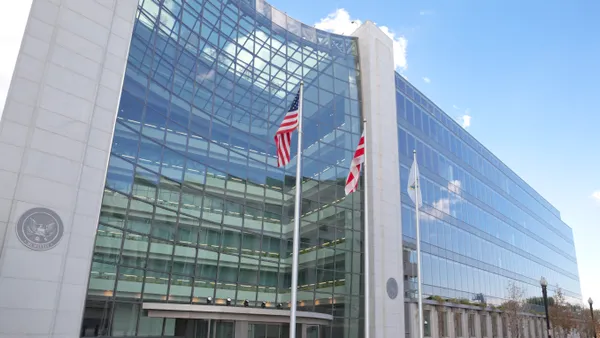Dive Brief:
- U.S. energy storage capacity installations jumped 84% year-over-year in Q1 2024, marking the highest storage capacity installed in the United States in a first quarter, according to a June 18 report from the American Clean Power Association and Wood Mackenzie.
- The latest edition of the U.S. Energy Storage Monitor saw utility-scale storage installations increasing 101% from Q1 2023 to reach 993 megawatts, with Texas, California and Nevada accounting for 90% of the U.S. total, while residential installations increased 48% from Q1 2023 to reach 252 megawatts, the most ever installed in the U.S. in a single quarter. But installations in the community, commercial and industrial segment, or CCI, dropped 43% year-over-year due to slowing activity in New York and Massachusetts, the report said.
- “We’re still seeing really strong growth [that is] largely following the renewables buildout” in the southwestern United States, but the community, commercial and industrial market has taken longer to develop than anticipated, Wood Mackenzie Global Head of Storage Allison Weis said.
Dive Insight:
Amid a strong start to the year for grid-scale energy storage capacity installations, WoodMac and ACP forecast 11.1 GW in total grid-scale installations for 2024, a 45% increase over 2023. Texas is expected to account for the most megawatts installed this year, overtaking California.
In the first quarter, 12 utility storage projects were installed in Texas while California had nine. Nevada’s solar-paired Gemini Energy Storage project accounted for its entire utility storage gain.
Wood Mackenzie and ACP forecast 12.9 GW in total storage installations across all segments in 2024, up 44% from 2023. Though still a robust rate of growth, that’s slower than the 86% increase from 2022 to 2023, Weis said.
Recent Wood Mackenzie and ACP data show a disproportionately low share of annual storage deployments in the first quarter of the calendar year. In 2023, their Energy Storage Monitor reports counted 686 MW of storage installations in Q1, 1,745 MW in Q2, 2,109 MW in Q3 and 4,316 MW in Q4.
Energy storage installation growth is expected to slow significantly in 2025 and 2026 “largely due to early-stage development challenges such as permitting and siting, and interconnection queue timelines,” the report said.
“We continue to see a lot of delays on projects compared to when they were expected to go online,” Weis said.
Total U.S. energy storage installations are expected to reach 75 GW for the 2024-2028 period, driven by accelerating growth in 2027 and 2028, the report said. Residential storage will account for 79% of an expected 13 GW of capacity additions in the distributed storage market, which includes residential and CCI, according to the forecast.
The CCI segment is likely to remain challenged for the next several years because it’s more complicated than residential and utility-scale storage, Weis said. With variable load shapes and business cases that often depend on the particulars of electricity tariffs, energy storage in the CCI market “is not as standardized a product,” she said.
The CCI segment is also vulnerable to shifts in state policy, Weis said. Wood Mackenzie and ACP cut their five-year CCI growth forecast by 34% after the California Public Utilities Commission in May rejected a proposal to create a net value billing tariff that community solar advocates said would expand distributed solar development across the state.
However, CCI storage deployments are expected to rise in California as commercial and industrial installations transition from the state’s old NEM 2.0 net billing tariff, which accounted for the majority of interconnections in Q1 2024, to the new NEM 3.0 net billing tariff, which incentivizes solar-and-storage systems, the report said.
Overall, the CCI segment is poised for longer-term growth due to “its strong value proposition and emerging value streams [that] will make it an exciting growth segment in the later years of our 10-year forecast,” the report said.
Despite high interest rates prompting a shift from customer-owned systems to systems owned by third parties, a sharp increase in California’s solar attachment rate is driving growth in the U.S. residential storage segment, Wood Mackenzie and ACP said. Residential storage installations tripled from Q1 2023 to Q1 2024, but the current residential attachment rate of 41% means “there is still a lot of room for growth,” the report said.
Wood Mackenzie said last year that distributed solar attachment rates in California would exceed 80% by 2027 following the implementation of the NEM 3.0 net billing tariff.












